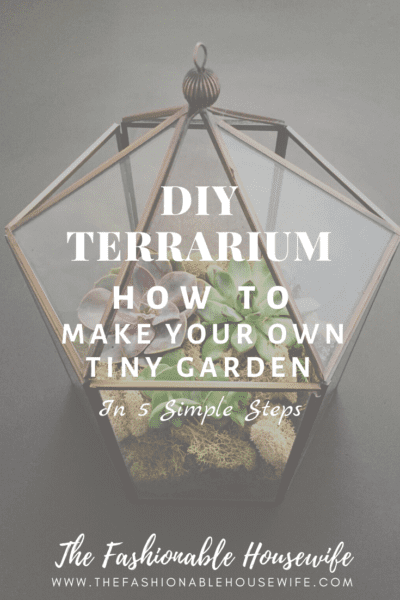
It is true when many interior design experts say that natural green always gives the final touch to the house decor. But let’s not forget that plants are not there just to make your house look good, they can improve both your mood and psychological state. Plants in a DIY terrarium can relieve stress symptoms and there are indications that it is positively correlated with battling depression and anxiety. Caring for plants in a DIY terrarium can do wonders for your own wellbeing and also teaches you how to restore your confidence and increase the standard of life.
If you enjoy growing and caring for plants indoors and at the same time like to reap the benefits of a garden without having to fertilize, mow, and prune everything, then creating a DIY terrarium might just be the right thing for you. Terrariums are eye-catching little green gardens that are ultra-popular because of their beauty, oxygen boosting, fuss-free maintenance, and minimal space requirements.
Getting Started With DIY Terrariums!
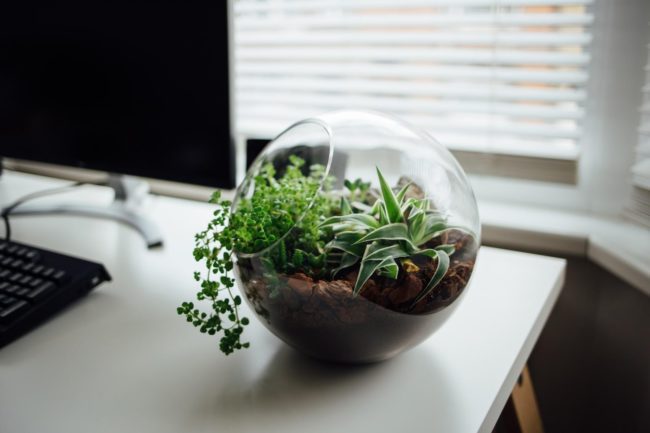
Terrariums are very easy to make. They can be made in any size and shape. And you have the advantage to easily switch up the container of choice to fit into any decor. You can be very creative with fun figurines and ornamental landscaping. But don’t forget to decide where it’ll be placed in your home before you begin to make one.
You can make a DIY terrarium in less than an hour with only a few materials on hand. To save lots of money you should shop in discount stores, flea markets, or consignment shops, where you’ll find really cheap yet interesting glass containers, jars, or maybe even fish bowls. Generally, small house plants are used as terrarium plants, which frequently only cost a few dollars each, therefore the whole project, counting on the dimensions of your jars, doesn’t need to be expensive.
What do you need to make a DIY terrarium?
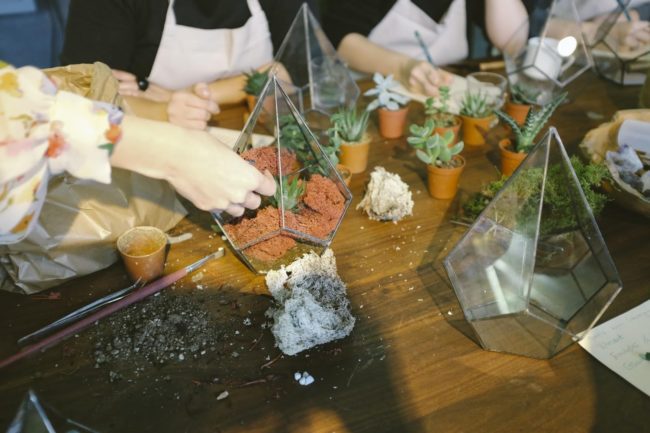
Once you find the perfect container, surprisingly, you don’t need much else to make a gorgeous DIY terrarium. Terrarium care is really easy and today it’s very easy to find terrarium kits and accessories and every other necessary component to complete your little green oasis. You can also find great plant choices for beginners, a lot of different shapes and sizes of glass containers to pebbles and stones. It is fascinating how simple it is to put them together and enjoyable at the same time.
Glass container
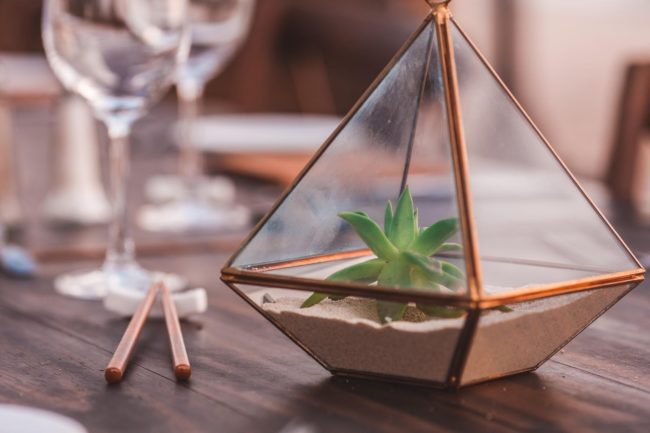
You can really use anything for a DIY terrarium, as long it is glass. Just confirm the container is clear and not colored glass, which could hinder growth. Source your containers from a thrift store or an antique shop, or simply look around your house for an old jar. They can be left open or closed—it’s totally up to you and your choice of container.
Polished pebbles, sea glass, or marbles
You can place a couple of rocks at the bottom of the container. This layer is meant to shape the terrain while aiding drainage and aeration. The layer’s thickness should vary judging by the dimensions of the container. The smaller the vessel, the thinner the rock layer. You’ll definitely want to add enough space at the top of your DIY terrarium when you’re finished with the arrangement. And ensure that the setup doesn’t look cramped.
Soil
Cacti and succulents need special soil compared to most other plants, so make sure you choose the right plants for the soil you already picked. It is very important to add enough soil so the plant roots will have a lot of space to grow and thrive. Aim for a depth slightly greater than the peak of the plant’s pot.
Moss
You can add moss on top of the stones, a simple choice of the gardener so the moss layer can separate the mixture of the charcoal and stones. This is often an aesthetic decision so this step is optional. It’s worthwhile, though, because it can add visual interest to your DIY terrarium.
Because the moss has no roots or water vessels means it tends to like high humidity and consistent water supply – which makes it great for closed terrariums.
Plants
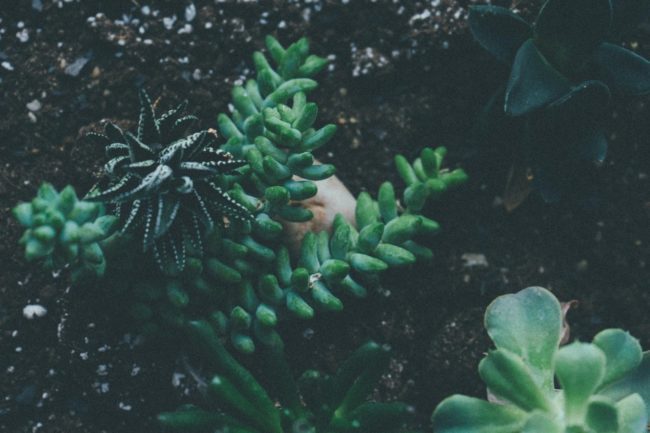
When choosing terrarium plants, confirm they’re sufficiently small to suit in your jar, preferably without touching the edges. You’ll also want to select plants that don’t mind a damp environment. So, search for plants that like low to medium light. Get a mixture of sizes, leaf textures, and leaf colors. However, if you’ve got your heart set on succulents, you’ll make beautiful DIY terrariums with these plants, but you’ll want to form a topless terrarium and add clean, coarse sand to your potting mix.
Watering Tips
Give the plant some water so it can prevent transplant shock and at the same time keep in mind that the container doesn’t have drainage holes as a potted plant would. The rocks layer will aid with drainage. For most DIY terrariums, a light-weight misting of water every two to four weeks should be sufficient. Use a spray bottle or watering pot with a rose attachment on the spout to water your terrarium. You don’t want it to be soaking wet, just damp enough. The key is to not over-water it!
Care and Maintenance
Maintenance is minimal once the plants are established. As they grow you’ll want to trim any branches that grow out and over the highest part of your container.
Terrarium care is child’s play. Check every few weeks to make sure that your DIY terrarium doesn’t need water. Feel the soil with your fingers to see if it’s dry and add some water if it is. Pull off any leaves that show signs of yellowing or damage and prune plants if they grow too big.
Don’t forget even DIY terrariums can last for several years or even longer if they are well maintained.
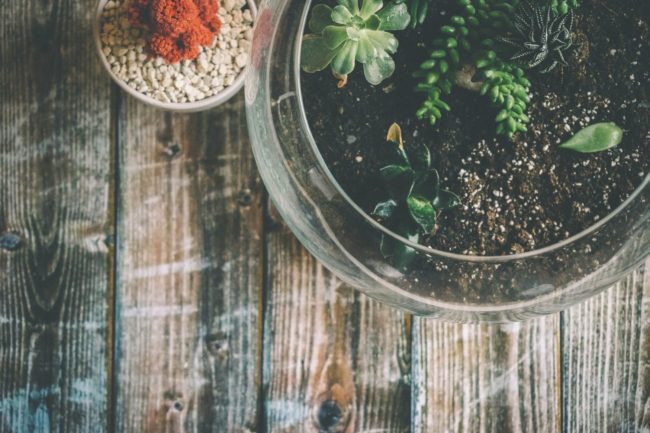
Conclusion
Not all are familiar with the Wardian case which was an ancestor of the terrarium, a sealed protective container for plants, which was used greatly in the 19th century to protect foreign plants imported to Europe from overseas for the work goals of many scientific and amateur botanists at the time.
Today’s modern glass terrariums have a different goal, they are more focused on bringing nature indoors, helping you practice gardening, and nurturing for plants when you have a limited amount of space. With how small these little gardens are, you can have a plant for every room in your home!
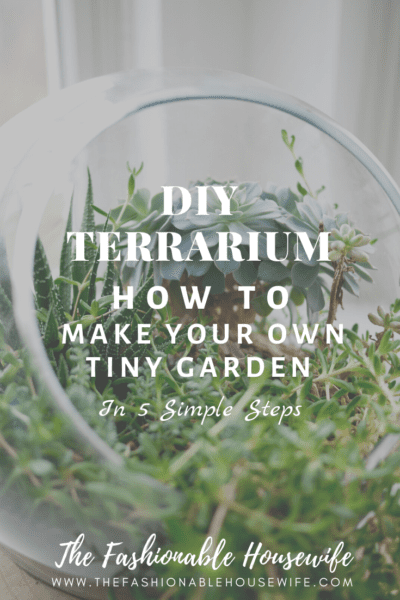
Leave a comment and let us know how your DIY terrariums turn out!



